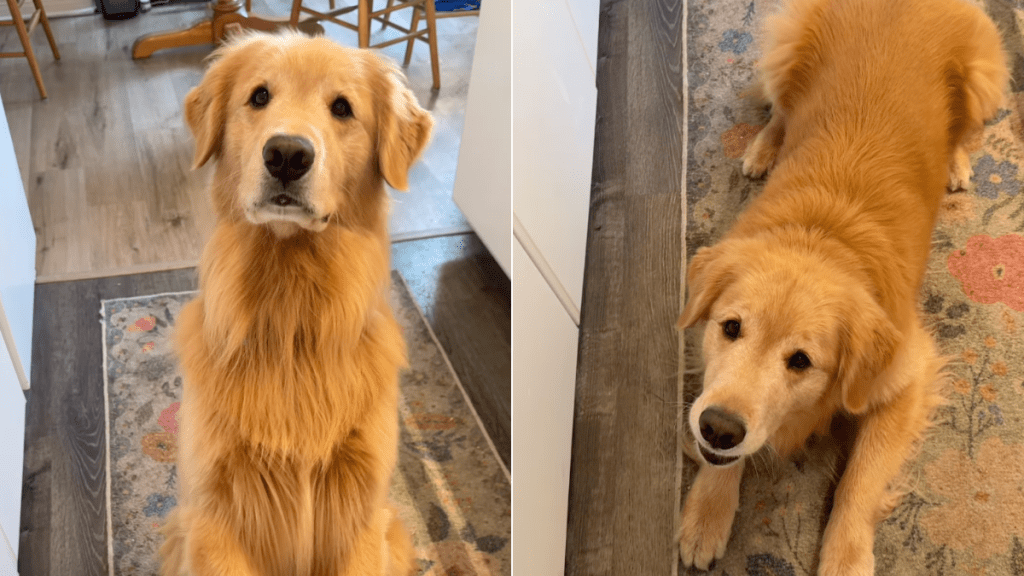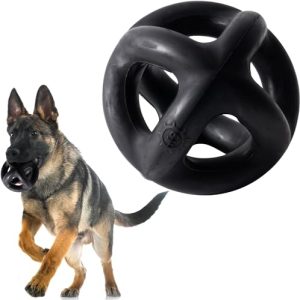Training your Golden Retriever can be one of the most rewarding experiences you’ll have as a dog owner. You want your furry friend to be happy, well-behaved, and a joy to be around.
But where do you start? How can you make sure your dog learns quickly and enjoys the process? In this guide, you’ll discover simple, effective steps to train your Golden Retriever. By the end, you’ll have the tools to build a strong bond with your dog and create a loving, obedient companion.
Ready to see real progress with your Golden Retriever? Let’s dive in.

Credit: www.youtube.com
Choosing The Right Training Approach
Choosing a training style that matches your Golden Retriever’s personality helps speed learning. Positive rewards and clear commands keep training fun and effective. Consistency and patience build a strong bond and good behavior.
Choosing the right training approach for your Golden Retriever is crucial. This breed is smart and eager to please. They thrive on positive interactions. Tailoring your training method to fit their personality is key. This ensures a happy and obedient companion.Positive Reinforcement Techniques
Golden Retrievers respond well to positive reinforcement. Use treats, praise, and playtime as rewards. Reward good behavior immediately. This helps them connect the action with the reward. Keep sessions short and fun. This maintains their interest and enthusiasm.Consistency And Patience
Consistency is vital in training your Golden Retriever. Use the same commands and cues every time. This builds familiarity and understanding. Patience is equally important. Training takes time and effort. Celebrate small victories along the way.Setting Realistic Goals
Set achievable goals for your Golden Retriever’s training. Start with simple commands like sit and stay. Gradually increase difficulty as they learn. Adjust goals based on your dog’s progress. Be flexible and understanding of their pace.
Credit: www.thetrainingofdogs.com
Basic Commands Every Golden Retriever Should Know
Training your Golden Retriever in basic commands sets a strong foundation. These commands help build good behavior and safety. Golden Retrievers learn quickly with clear, consistent training sessions. Teaching these commands improves your bond and makes daily life easier.
Sit And Stay
“Sit” is the first command to teach. It helps your dog focus and wait calmly. Hold a treat close to your dog’s nose, then move it up. Your dog will naturally sit to follow the treat. Say “sit” and give the treat as a reward.
“Stay” teaches patience and control. Once your dog sits, hold your hand out and say “stay.” Step back slowly. If your dog stays, give praise and a treat. Repeat this to build longer stays.
Come And Heel
“Come” is vital for safety. Call your dog’s name, then say “come” with an inviting tone. Reward your dog when it approaches. Practice in a quiet place first, then try outside.
“Heel” keeps your dog walking beside you. Use a short leash and say “heel” while walking. Reward your dog for staying close. This command prevents pulling during walks.
Leave It And Drop It
“Leave it” stops your dog from picking up unwanted items. Show a treat in your hand and say “leave it.” Wait until your dog stops trying, then give a different treat as a reward.
“Drop it” helps when your dog already has something in its mouth. Offer a treat and say “drop it.” When your dog releases the item, give the treat and praise.
House Training Tips
House training your Golden Retriever can feel challenging, but with the right approach, it becomes a smooth process for both you and your dog. Consistency and patience are key, as your pup learns where and when to go. Let’s focus on practical tips that make house training less stressful and more effective.
Establishing A Routine
Dogs thrive on routine, especially during house training. Take your Golden Retriever outside at the same times every day—first thing in the morning, after meals, and before bedtime.
This predictability helps your dog understand when it’s time to relieve itself. Have you noticed how your dog’s behavior changes right before it needs to go? Watching for these signals and sticking to your schedule will reduce accidents.
Crate Training Benefits
Using a crate can be a powerful tool in house training. Dogs naturally avoid soiling their sleeping area, so a crate encourages them to hold it until you take them outside.
Make sure the crate is comfortable and just big enough for your Golden Retriever to stand, turn around, and lie down. A cozy crate becomes a safe space, not a punishment.
Have you tried using treats or toys to make crate time positive? This can transform your dog’s attitude towards the crate and speed up training progress.
Handling Accidents Calmly
Accidents are part of the process. Reacting with anger or punishment can confuse your dog and slow down training.
Instead, clean the area thoroughly to remove any lingering smell and avoid scolding your pup. Ask yourself: How can I guide my dog gently towards the right behavior?
Redirect your dog to the appropriate spot and praise them enthusiastically when they go outside. Positive reinforcement builds trust and encourages your Golden Retriever to repeat good habits.

Credit: dogtime.com
Socialization Strategies
Socialization is essential for a well-behaved Golden Retriever. It helps them become confident and friendly. Early and varied social experiences reduce fear and aggression. Start socializing your dog as soon as possible for best results.
Introducing To New People
Introduce your Golden Retriever to different people often. Use calm voices and gentle petting. Let your dog approach new people at their own pace. Reward your dog with treats for calm behavior. This builds trust and positive associations with strangers.
Meeting Other Dogs
Arrange playdates with well-mannered dogs. Choose neutral areas to avoid territorial behavior. Watch your Golden Retriever’s body language closely. Stop interactions if either dog shows stress. Positive experiences with other dogs improve social skills.
Exposure To Various Environments
Take your dog to many places like parks, streets, and stores. Let them explore different sights, sounds, and smells. Keep your dog on a leash for safety. Gradually increase the time spent in new places. This helps your Golden Retriever adapt to new situations calmly.
Advanced Training Techniques
Advanced training techniques help deepen your Golden Retriever’s understanding and improve their responsiveness. These methods challenge your dog’s mind while strengthening your bond. By pushing beyond basic obedience, you create a more confident and well-behaved companion.
Teaching Tricks And Commands
Adding new tricks keeps training fun and mentally stimulating for your dog. Start with simple tricks like “spin” or “shake,” then gradually increase difficulty to “roll over” or “play dead.” Use clear, consistent commands and reward immediately to help your dog connect action with instruction.
Try breaking complex tricks into smaller steps. This approach makes learning less overwhelming and helps your dog succeed faster. Have you noticed how your Retriever’s tail wags more eagerly when they finally master a new trick?
Using Clicker Training
Clicker training is a powerful way to communicate precisely when your dog does something right. The distinct sound marks the exact moment of correct behavior, making it easier for your dog to understand what you want.
Pair the clicker sound with treats during early training sessions to build positive associations. Over time, your Golden Retriever will respond to the click as a reward indicator alone. Consistency and timing with the clicker are key to seeing quick progress.
Addressing Behavioral Issues
Advanced training isn’t just about new tricks—it’s also about correcting unwanted behaviors. Identify triggers that cause issues like excessive barking or jumping and work to redirect your dog’s focus calmly.
Use positive reinforcement to reward calm, appropriate actions instead of punishing mistakes. This approach reduces anxiety and builds trust. What small change can you make today to help your dog feel more secure and behave better?
Maintaining Training Progress
Maintaining training progress is crucial for a well-behaved Golden Retriever. Consistency keeps lessons fresh and helps your dog remember commands. Training does not end after the first few sessions. It requires ongoing effort to build good habits and prevent old behaviors from returning.
Regular Practice Sessions
Short, frequent training sessions work best for Golden Retrievers. Practice daily to reinforce commands. Keep each session fun and positive to hold your dog’s attention. Use simple commands and repeat them often. Consistency in timing helps your dog expect training and stay focused.
Rewarding Good Behavior
Praise and treats motivate your dog to behave well. Offer rewards immediately after the desired action. Use a calm voice to show approval. Treats should be small and healthy to avoid overfeeding. Positive reinforcement strengthens the bond and encourages your dog to listen.
Adjusting Training As Needed
Every dog learns at its own pace. Notice when your Golden Retriever struggles or loses interest. Change the training style or try new commands to keep it exciting. Increase difficulty gradually to challenge your dog. Adapt your approach to fit your dog’s mood and energy levels.
Frequently Asked Questions
How Long Does It Take To Train A Golden Retriever?
Training a Golden Retriever typically takes 6 to 12 months. Consistent daily sessions improve obedience and social skills. Early training and positive reinforcement yield the best results. Patience and repetition are key to success with this intelligent breed.
What Is The Best Age To Start Training A Golden Retriever?
The ideal age to start training is 8 weeks old. Puppies learn quickly and adapt well to new commands. Early socialization helps prevent behavioral issues. Begin with basic commands and gradually increase complexity to build strong habits.
How Often Should I Train My Golden Retriever Daily?
Training sessions should last 10 to 15 minutes, 2 to 3 times daily. Short, frequent sessions keep your dog engaged and prevent boredom. Consistency helps reinforce good behavior and skills. Adjust frequency based on your dog’s attention span and progress.
What Are Effective Training Techniques For Golden Retrievers?
Positive reinforcement, such as treats and praise, works best. Use clear commands and reward good behavior immediately. Avoid harsh corrections to build trust. Incorporate play and socialization to enhance learning. Consistency and patience are essential for effective training.
Conclusion
Training your Golden Retriever takes patience and care. Start with simple commands and be consistent. Praise your dog often to encourage good behavior. Keep training sessions short and fun to hold attention. Remember, every dog learns at its own pace.
Building a strong bond helps your dog listen better. Stay calm and positive throughout the process. With time, your Golden Retriever will become well-behaved and happy. Training creates a loving relationship you both will enjoy. Keep practicing, and enjoy every moment together.

Emily Barker is the founder of ChillDogLife.com, a space dedicated to helping pup parents discover the best dog products, lifestyle tips, and cozy ideas for happier homes.
A lifelong dog lover, Emily combines her passion for pets with a knack for research to share trusted recommendations on everything from toys and furniture to health and everyday care.
Her goal is simple: to make life easier, stylish, and more joyful for dogs and the people who love them.







